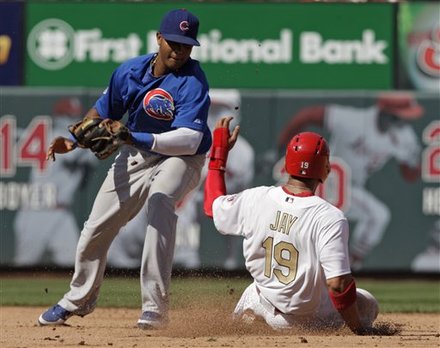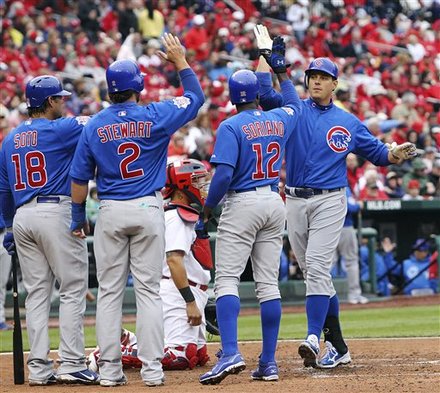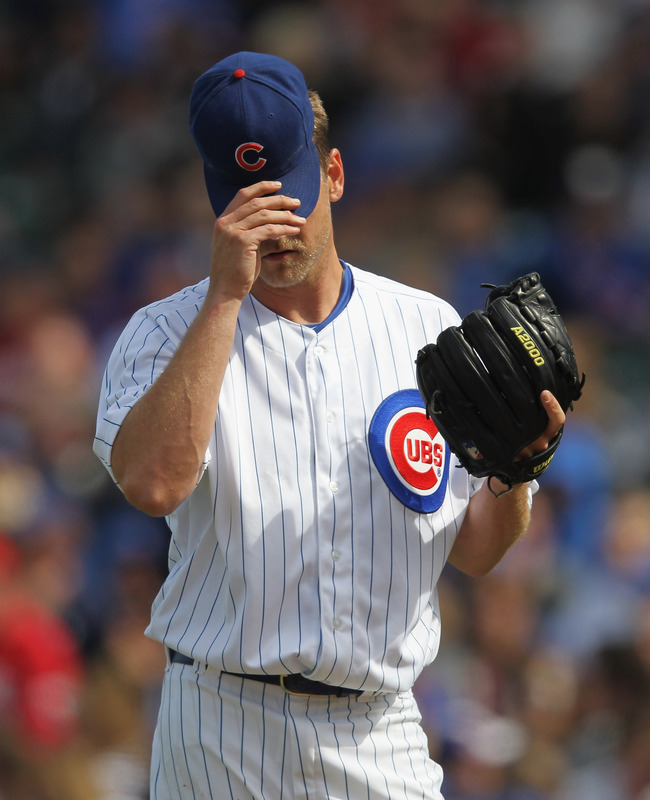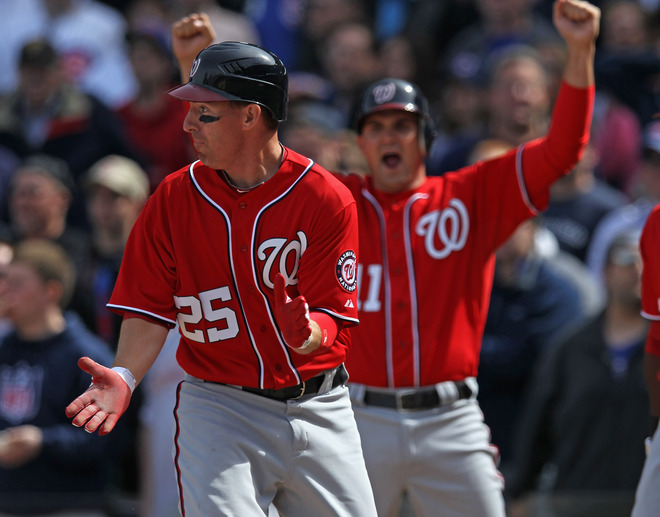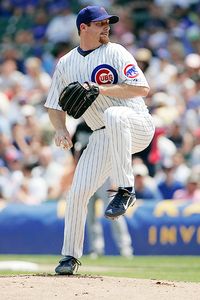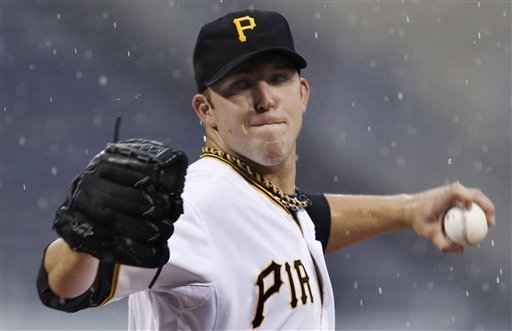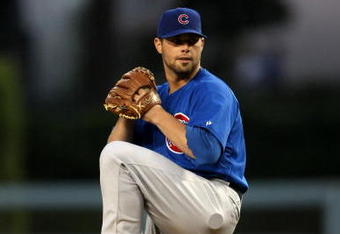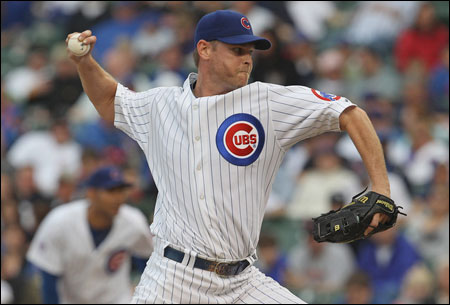 |
| Kerry Wood |
Young unit loses prime setup man but remains strong with hard-throwing core
The 2011 Cubs were simply not a good team at 71 wins, 91 losses. The bullpen, however, was undoubtedly a team strength. I believe that if the closer had been as good as he had for his entire career, this bullpen would have rivaled those of top contending teams.
That closer, of course, is the nasty
Carlos Marmol, 29. The side-arming right-hander pitched to a 2.86 ERA 61 saves, a 12.9 K/9 ratio, a ridiculous 4.8 H/9 ratio, but a 5.6 BB/9 ratio between 2008-10. In 2011, however, he worsened to a 4.01 ERA with 10 blown saves, most in the National League. In six of those blown saves, he also let up at least another run to lose the game. He has the wildest delivery this side of Francisco Rodriguez but doesn't control it well as K-Rod does.
 |
| Carlos Marmol |
Marmol throws far too many balls, especially to begin an at-bat. It seems he always falls behind 2-0 before coming back with a slider over the middle of the plate for strike one. The issues got so bad last season that he began throwing a cutter (or 'soft' slider) - without telling any coaches. It didn't work, and manager Dale Sveum
has already told him to knock it off. No, Carlos, you're not Mariano Rivera. Sorry, but the cutter just isn't that easy. Marmol was given the ball with a lead to save 44 times last season, and he saved 34 of them. Hypothetically, if given the same amount of chances this year, saving 40 should be a good goal for him. It's certainly a challenge, but within his talent level.
Most of those leads handed over to Marmol had something to do with former setup man Sean Marshall. Marshall, who, like Marmol, began his major league career as an unsuccessful starter, confirmed his status as one of the elite setup men in the game last year with a 2.26 ERA and 4.65 K/BB ratio. Marshall was flipped to Cincinnati when his stock price was highest, meaning the primary setup man duties fall to
Jeff Samardzija.
 |
| Jeff Samardzija |
I talked briefly about Samardzija in the last post for the rotation, where he is being considered as the longest of longshots. Truth be told, however, his loss would be a big blow to this 'pen. His 2.97 ERA showed that he could be a good primary middle reliever, and now with Marshall's departure, he's ready for the next step. He works lefties tough on the inside part of the plate. Despite having the matchup advantage, they hit only .208 against the tall former Notre Dame wide receiver. Righties didn't do any better, hitting .195 off him. Too many batters got on base via the base on balls (50 of them, to be exact) but he still held hitters to a .220 average with men on base, which is hard to do considering the pressure on the pitcher at that point. Some want to call his season a fluke, but I hope those factors of domination show that he's a changed pitcher and not just a lucky son-of-a-gun.
I haven't heard anyone call
Kerry Wood's 2011 a fluke. The 34-year-old pitched to a very respectable 3.35 ERA last season with 57 strikeouts in 51 innings. As always, Wood brought the heat on a daily basis with that nasty curveball. Wood is guaranteed a job with the Cubs for as long he likes, whether that means in the 'pen or front office. For this season, however, he's a great option as a middle relief/setup man.
 |
| James Russell |
Other primary names that will be in the mix include 26-year-old
James Russell, 27-year-old
Marcos Mateo, 26-year-old
John Gaub, 24-year-old
Rafael Dolis, 23-year-old
Lendy Castillo and 27-year-old
Scott Maine. Clearly it's a very young group, but some have more potential than others. Russell was tried in the rotation last year during the grand scramble for starting pitching, and he imploded. Put back into middle relief though, he performed well. I really like this kid's over-the-top delivery, it's very smooth and fundamentally correct; I hope to see him do well in this role this season.
Mateo is an less developed strikeout pitcher with a good fastball and slider. He needs to work on his command to prove he can stay in the majors, but I like his raw stuff as it is right now.
 |
| John Gaub |
Gaub throws some serious, serious heat. In about 212 career minor league innings, he has struck out 298. He made his major league debut last season and I believe will play a big role this year. He's a lefty with a power slider, which already gives him value. He walks about as many hitters as Marmol, however, so we'll see if his command has improved.
Maine was acquired before 2010 in the trade that sent former Cubs reliever Aaron Heilman to Arizona. He has gotten tidbits of major league playing time over the past two years, but not enough to be judged upon. In the minors he has a lifetime 3.34 ERA and recorded 12.6 K/9 last season at AAA Iowa. He's ready for the major leagues, and I was hoping we'd see more of him last season. I see him as a setup man as early as 2014 if not next year.
If nothing else, Dolis has a tremendous ability to keep the ball in the ballpark. In 353.2 minor league innings, he's only allowed 14 homers. This is good, but he's still going to allow runs if he continues to walk as many as he does in the minors. If he makes the major league roster out of Spring Training, I'd call that a risky move.
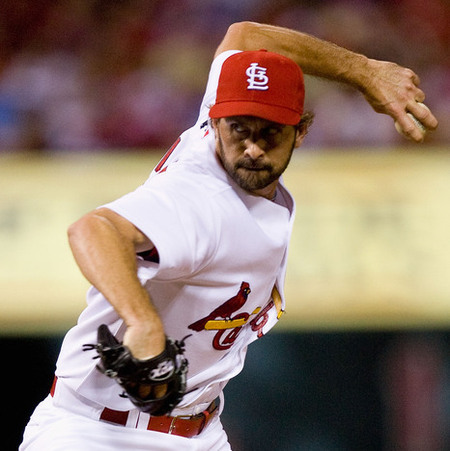 |
| Trever Miller |
Speaking of risky moves, Castillo qualifies; he was a Rule 5 pick from the Phillies - meaning he must be on the major league roster all season or else he'll have to be returned the Phillies. The Cubs' last Rule 5 pick was reliever David Patton in 2009, and that didn't turn out so well. Patton hasn't pitched in the majors since. Castillo has a 2.43 career ERA in the minors and exactly one strikeout for every inning pitched on average to go with an impressive 1.15 WHIP. These are all nice, but they might mean more if Castillo had ever pitched above A ball. Look for him to be used in blowout games only to begin with (which was also Patton's role).
The Cubs bullpen is a very young group now. The only free agent acquisition, left-hander
Trever Miller, is also the only man over 30 heading into the season. Out of the pool of middle relief candidates, I believe Gaub, Maine, and Russell will become the primary three by midseason especially because of their strong command. Dolis, Castillo, and Mateo are slightly risky for different reasons and won't all be on the major league roster all year. Wood, Samardzija, and Marmol are strong pieces at the back. Despite losing the big prize in Marshall, the bullpen remains a strength for the Cubs despite the uncertainty of the younger pieces.


